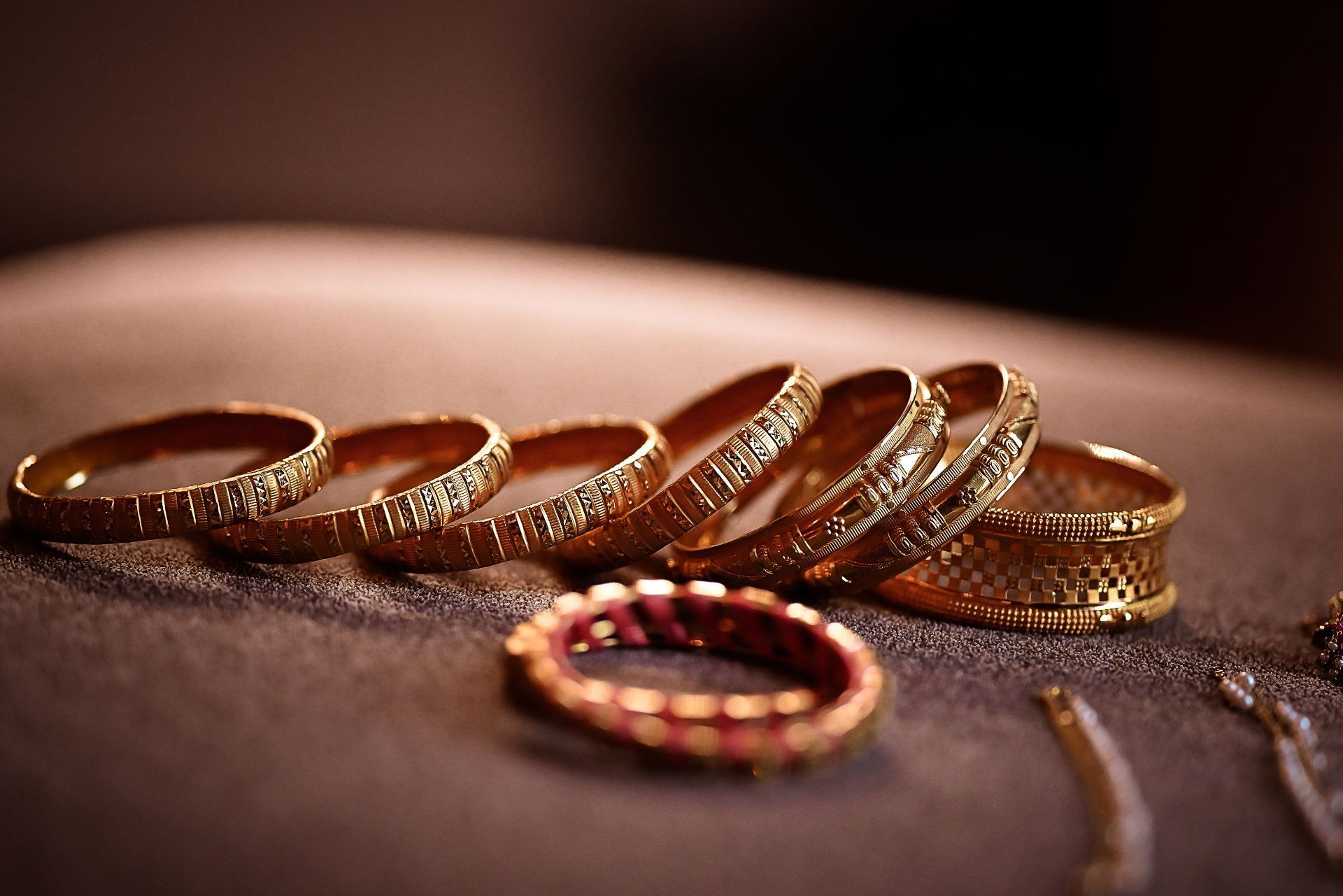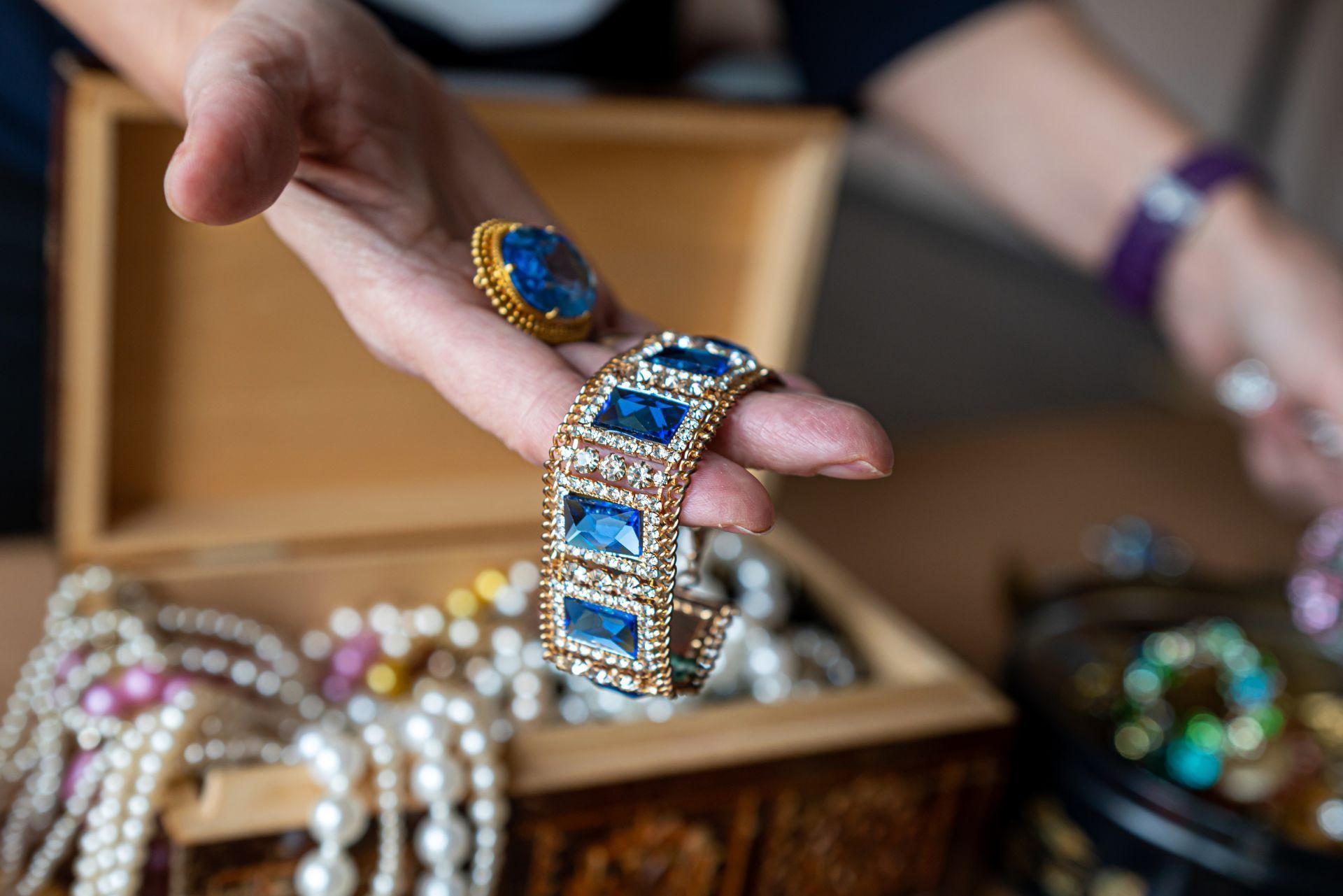Top 3 Recommended Policies

By: David Graves
Licensed Personal Insurance Specialist
425-320-4280
The moment a new ring slips onto a finger, a vintage necklace is discovered in Pike Place Market, or a Rolex is purchased from a Bellevue boutique, the story of that piece begins. In Washington, fine jewelry carries not only monetary worth but emotional value tied to engagements atop Mount Rainier or heirlooms passed down on Bainbridge Island. Protecting those treasures is more than smart financial planning—it is peace of mind. This detailed guide unpacks everything Washingtonians need to know about jewelry insurance, from the risks unique to the Evergreen State to policy options, pricing, appraisals, and claims. Read on, and learn how to keep cherished gems sparkling no matter what life brings.
Why Insuring Jewelry Matters in Washington
Jewelry remains one of the most commonly underinsured possessions across the United States. According to a 2023 report from the Insurance Information Institute, 56% of homeowners who own jewelry worth more than $5,000 rely solely on their basic homeowners policy, which often caps jewelry coverage at $1,500. In a state like Washington—where average engagement ring costs hover near $6,800, slightly above the national average—the gap between actual value and default coverage quickly becomes dangerous.
Beyond sheer dollar figures, Washington’s active outdoor culture exposes valuables to more hazards than strictly indoor lifestyles. Hiking, kayaking, skiing at Stevens Pass, and boating on Lake Washington all increase the chance of accidental loss or damage. Emotional stakes are likewise lofty; losing an heirloom brooch inherited from a Seattle great-grandmother can’t be remedied by a simple payout.
Insurance provides two critical safeguards: financial restitution for loss, theft, or damage, and access to professional repair or replacement resources that maintain sentimental worth. It relieves the owner from relying on savings, credit cards, or relatives should disaster strike. For many, coverage even improves day-to-day enjoyment: a fully insured watch can be worn with confidence rather than hidden away in a jewelry box.
Moreover, the unique cultural landscape of Washington adds another layer to the importance of jewelry insurance. The state is home to a vibrant arts scene, with numerous local artisans crafting one-of-a-kind pieces that often carry significant emotional and financial value. From handcrafted necklaces to bespoke engagement rings, these items not only represent personal milestones but also the creative spirit of the region. Insuring such distinctive jewelry ensures that the artistry and sentiment behind each piece are protected, allowing owners to celebrate their heritage without fear of loss.
Additionally, Washington's diverse climate can pose various risks to jewelry. The humidity of the coastal regions can lead to tarnishing, while the dry conditions of the eastern part of the state may cause stones to loosen in their settings. Regular maintenance, often covered under insurance policies, can help mitigate these risks, ensuring that jewelry remains in pristine condition. This proactive approach to care not only preserves the beauty of the pieces but also enhances their longevity, making insurance not just a safety net but a vital part of responsible ownership.

Risks Unique to the Evergreen State
The Pacific Northwest’s spectacular scenery arrives hand in hand with notable hazards. Washington sits in the Cascadia Subduction Zone, where experts forecast a 15 %–20 % chance of a major earthquake within the next 50 years. Jewelry stored at home could be lost under rubble or damaged by broken water lines. Standard homeowners policies may cover structural damage, but uninsured gems are another story.
Weather also plays a part. Seattle’s rainfall tempers many outdoor events, increasing slip-and-fall incidents that can send rings flying into Puget Sound or down sidewalk storm drains. Eastern Washington, meanwhile, experiences summer wildfires; the 2022 wildfire season burned more than 140,000 acres statewide. If evacuation is necessary, hurried packing often results in misplaced valuables.
Finally, theft trends matter. The Seattle Police Department’s 2023 crime dashboard shows a 7 % rise in residential burglaries over the previous year, with popular neighborhoods like Capitol Hill and Ballard hit hardest. While Washington ranks mid-pack nationally for property crime, metro pockets face sustained pressure. In short, state residents contend with earth, water, fire, and human hands—all strong arguments for dedicated jewelry coverage.
Additionally, the unique geography of Washington contributes to its risk profile. The state is home to numerous fault lines, and the potential for tsunamis along the coast adds another layer of concern for those living in low-lying areas. Coastal residents must remain vigilant, as a significant seismic event could trigger massive waves that inundate homes and businesses. This risk is particularly relevant for those with valuable items stored near the shoreline, as the destructive force of a tsunami can lead to total loss in seconds.
Moreover, the state's diverse climate zones can lead to unexpected weather events. From the heavy snowfalls in the Cascade Mountains to the intense windstorms that can sweep through coastal regions, the unpredictability of nature can wreak havoc on property. Homeowners may find themselves facing roof damage from falling trees or flooding from rapid snowmelt. Such occurrences not only threaten the physical structure of homes but also put treasured possessions, including jewelry, at risk. As a result, understanding the full spectrum of potential hazards is essential for residents to adequately protect their valuables.
What Does Jewelry Insurance Cover?
Theft & Burglary
The most straightforward peril involves someone taking valuables without permission, whether it is a break-in at a Spokane condo or a pickpocket incident at a Tacoma concert. Comprehensive jewelry policies reimburse either the replacement cost or the appraised value, depending on the contract wording. Many companies even provide worldwide protection, helpful for frequent travelers flying out of Sea-Tac.
Accidental Damage & Loss
A gem can chip on granite countertops or a ring may slip off while launching a paddleboard on Lake Chelan. Stand-alone jewelry policies usually cover these mishaps with no deductible or a low one (often $0–$100). By contrast, homeowners insurance typically excludes mysterious disappearance and accidental loss. That single difference alone convinces many Washingtonians to choose specialized coverage.
Natural Disasters
Earthquakes, wildfires, landslides outside Issaquah, and even volcanic ash drifting from Mount St. Helens make natural disaster coverage essential. A separate earthquake policy might repair the home itself, yet jewelry is classified as personal property and needs its own attention. A broad jewelry policy folds acts of nature into its definition of covered perils so that the same contract guards valuables from multiple fronts.
Policy Options in Washington
Riders on Homeowners or Renters Insurance
Many carriers—think Farmers, Liberty Mutual, or State Farm—allow policyholders to add a “scheduled personal property” rider that lists each piece separately with an appraised value. This route is convenient because billing merges with an existing policy, and bundled discounts often apply. The downside is that the claim still passes through the main homeowners deductible unless negotiated otherwise, and filing jewelry claims can threaten home policy rates at renewal time.
Another limitation is claim settlement methodology. Some home insurers pay “actual cash value,” meaning depreciation lowers the payout. Fine jewelry rarely depreciates the way electronics do, so ACV can shortchange owners. Confirm whether the rider offers replacement cost or agreed value before signing.
Stand-Alone Jewelry Policies
Specialists such as Jewelers Mutual Insurance Group or Lavalier concentrate solely on jewelry. Policies include broad coverage, flexible deductibles—even $0—and access to a network of vetted jewelers across Washington, from Bellingham artisans to Yakima watchmakers. Claims on these policies do not affect homeowners rates, making them attractive to anyone guarding premium discounts on primary residence coverage.
Stand-alone policies often feature automatic value inflation protection, meaning if the gem market rises 25 % over a decade, the coverage limit automatically adjusts at renewal. This is particularly handy for diamond jewelry, which has seen steady price increases averaging 3.8 % annually since 2010 according to Rapaport data.
How Much Does Jewelry Insurance Cost?
Most providers quote premiums of 1 %–2 % of the item’s appraised value each year. In practical terms, insuring a $7,500 engagement ring in Seattle might cost between $75 and $150 annually. Factors influencing that range include zip code crime metrics, chosen deductible, home security systems, and whether the piece is worn daily or stored in a bank vault.
Urban areas such as Seattle or Tacoma typically carry higher premiums than rural Skagit County addresses, reflecting local crime statistics. Yet savings opportunities exist. Many Washington insurers reduce rates by up to 10 % for owners who install UL-rated home safes or alarm monitoring linked to law enforcement. If the ring spends most of its time in a Bellevue safety deposit box, a further discount may apply because risk of loss diminishes.
Comparing quotes remains crucial. Providers use proprietary algorithms; one company may prioritize earthquake risk, another burglary trends. Collect at least three estimates and review deductibles carefully. A $0 deductible adds convenience but bumps premium; raising it to $500 can drop cost by 20 %–25 % while still keeping out-of-pocket risk manageable.
Getting Your Jewelry Appraised and Documented
Proper coverage begins with accurate valuation. Washington hosts dozens of American Gem Society (AGS) and Gemological Institute of America (GIA)-credentialed appraisers, many clustered in Seattle’s diamond district on 4th Avenue. Selecting a certified professional means the appraisal will meet insurer standards, including detailed photographs, gemstone grading, metal content, and market comparisons.
For brand-new purchases, the original sales receipt or a GIA grading report may suffice initially, but insurers still request a formal appraisal within one to two years. Market fluctuations can render valuations obsolete; most companies require updates every three to five years to keep pace. Scheduling a reassessment is wise—especially after major life events like inheritance, gemstone upgrades, or custom redesigns.
Documentation should not end with the appraisal. Keep electronic copies of receipts, CAD renderings, and high-resolution images stored securely in cloud storage or an external hard drive. In the event of a claim—say, a lost emerald pendant while touring the Olympic Peninsula—having that packet readily available speeds up settlement and ensures full value is recognized.
Choosing the Right Insurer
Financial Strength
An insurance promise holds weight only when the company behind it is solvent. Independent rating agencies such as A.M. Best or Standard & Poor’s grade carriers on their ability to pay claims. Aim for A- ratings or higher. Jewelers Mutual, for example, currently carries an A+ rating from A.M. Best—a solid benchmark when comparing lesser-known newcomers.
Coverall, Not Just Cost
The lowest premium may hide restrictive language. Scrutinize covered perils, worldwide travel clauses, and settlement options. “Repair or replace at our option” wording gives the insurer power to insist on in-house repair rather than a jeweler of your choice. Some policies list specific excluded activities—scuba diving, mountain climbing—that adventurous Washingtonians may love. Ensure the contract matches lifestyle.
Customer Service & Claims Reputation
Reading reviews on the Washington State Office of the Insurance Commissioner’s consumer complaint portal and independent sites like Trustpilot reveals patterns. Pay particular attention to response times and jeweler networks in state. A Bellevue resident might prefer an insurer with relationships at Seattle’s Green Lake Jewelry Works or Ben Bridge’s flagship store, ensuring local repair access rather than shipping valuables out of state.

The Claims Process Step by Step
Filing a claim typically starts online or via phone. Providers request incident details, police reports for theft, and supporting documents such as the appraisal. In Washington, stolen property reports can be submitted through most city portals—Seattle’s online police reporting system is user-friendly—making it easy to attach a case number.
Next comes evaluation. The insurer compares the claim to policy terms, confirms current market value, and decides on repair, replacement, or cash payout. With agreed-value contracts, the sum is predetermined, eliminating haggling. Turnaround times vary: simple losses may resolve within a week, while custom reproductions take longer, particularly if rare gemstones are involved.
Finally, resolution occurs. For replacements, policyholders typically choose from an approved jeweler. In Washington, this could mean visiting a Yakima goldsmith or a Spokane designer. Payments go directly to the craftsman, or cash is wired to the owner if the policy allows. Retain all communication in case of future questions; Washington’s statute of limitations on contract disputes is six years, giving ample time for any follow-up.
Preventive Measures to Lower Premiums
Insurance is only one part of a protection strategy. Installing a fire-resistant safe bolted to concrete floors can deter thieves and shield jewelry from heat up to 1,700 °F for an hour. Washington Safe & Vault in Auburn reports a 40 % uptick in residential jewelry safe sales over the last two years, indicating rising awareness.
Regular maintenance matters, too. Yearly prong inspections and professional cleanings at reputable jewelers help prevent stone loss. Maintaining gemstone tightness may earn a small premium discount and, more importantly, minimizes the likelihood of claims that could raise rates later. Many jewelers offer free cleanings and inspections—take advantage.
Frequently Asked Questions
Does homeowners insurance in Washington automatically cover jewelry?
Most homeowners policies include personal property coverage but limit jewelry payouts, often to $1,000–$1,500 for theft and even less for other causes. Without a rider or separate policy, that cap falls far below average jewelry prices in Washington’s urban centers.
Will a jewelry claim raise my homeowners premium?
Yes, when the jewelry is scheduled on a homeowners policy, any related claim counts toward the policy’s loss history and can trigger rate hikes. A stand-alone jewelry policy isolates that risk, preventing spill-over into home insurance pricing.
What documentation does a Washington insurer need after a loss?
Expect to provide the police report number for theft, photographs of the piece, the most recent appraisal, sales receipts if available, and a signed statement describing the incident. Having digital backups stored securely reduces stress during the process.
Are natural pearls and antique pieces insured differently?
Not necessarily, but appraisals must reflect fair market value rather than replacement cost. Antique and estate jewelry often appreciates; insurers may require specialist appraisals from gemologists experienced in vintage pieces.
Can I insure jewelry kept in a bank safe deposit box only?
Yes. Several insurers offer “vault-only” coverage at discounted rates, sometimes as low as 0.3 % of value annually. However, coverage applies only when the item is physically in the vault. Once removed—for a wedding or gala—you must notify the insurer or risk a coverage gap.
Final Thoughts
Washington’s breathtaking landscapes invite adventure, and its vibrant cities pulse with arts, tech, and culture. In such a dynamic environment, the jewelry people wear and cherish deserves robust protection. By understanding state-specific risks, exploring policy types, valuing pieces accurately, and choosing reputable insurers, Washingtonians can safeguard both the financial and sentimental worth of their gems. When insurance steps in, the mountain engagement ring, the Orcas Island anniversary pendant, or the Spokane heirloom timepiece can continue their stories for generations.
Ultimately, jewelry insurance transforms fragile beauty into secure legacy. With knowledge in hand and coverage in place, every glimmer from Puget Sound’s shores to the Cascades’ peaks becomes a sparkle enjoyed without worry.

